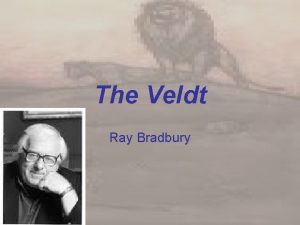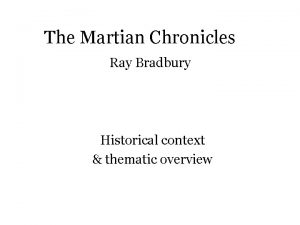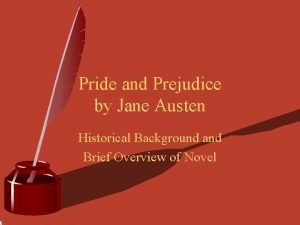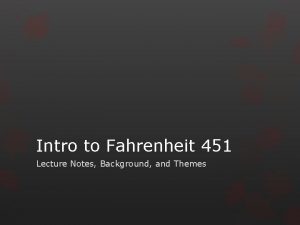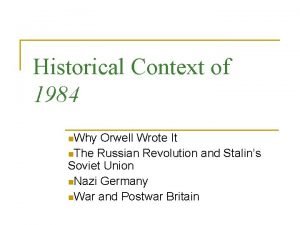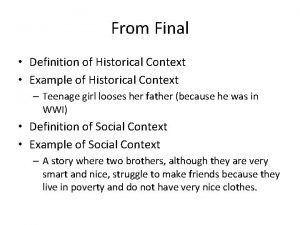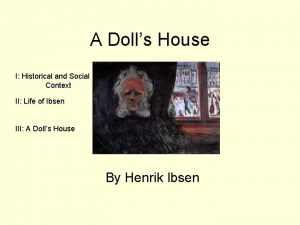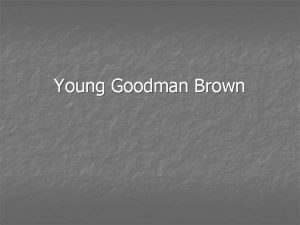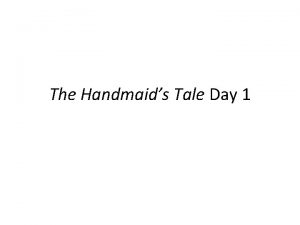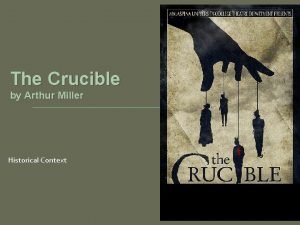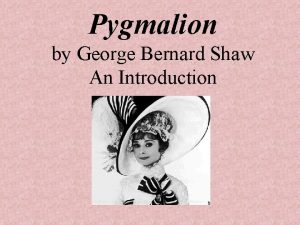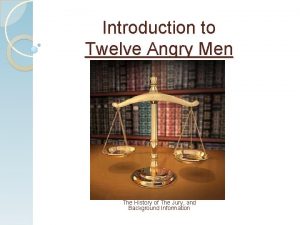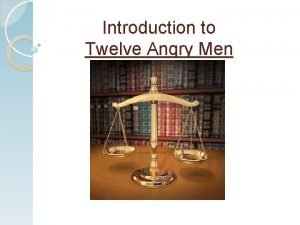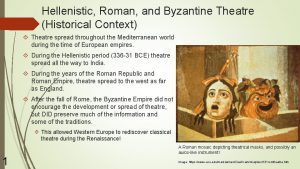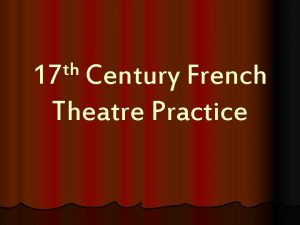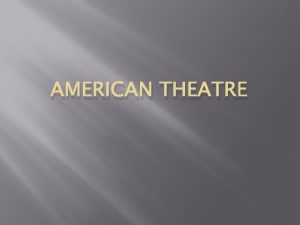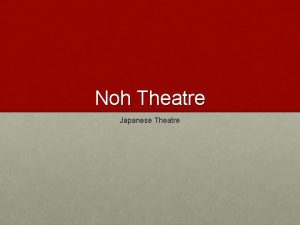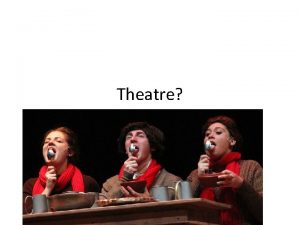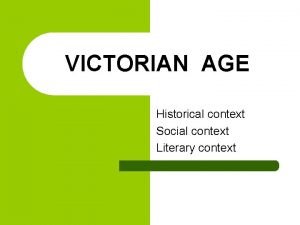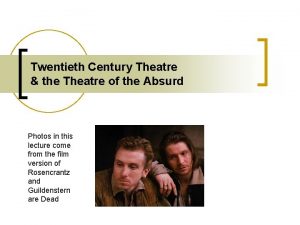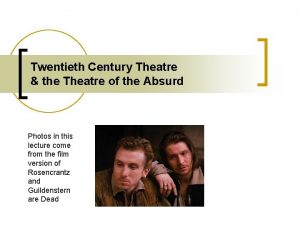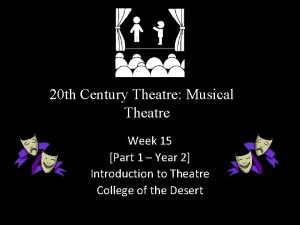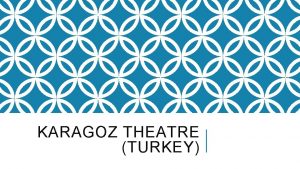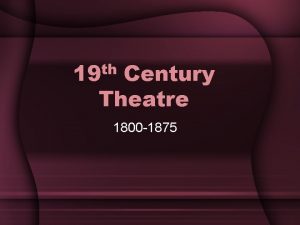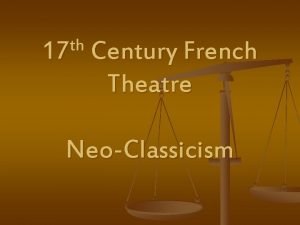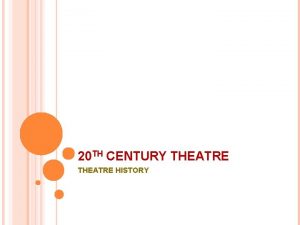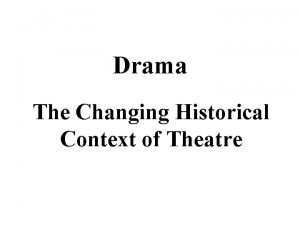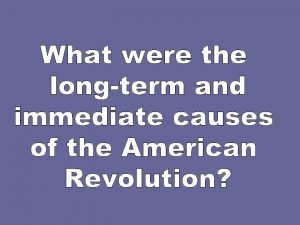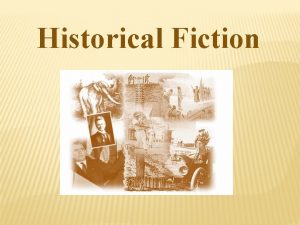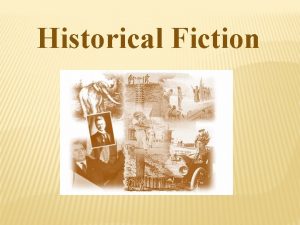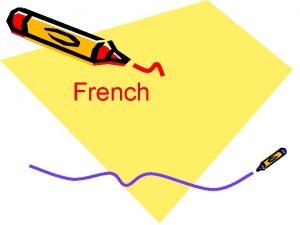th 17 Century French Theatre Practice Historical Context






























- Slides: 30

th 17 Century French Theatre Practice

Historical Context l Religious controversies in the XVI century that continued in the XVII century l 1625 – Cardinal Richelieu ( Louis XIII’s prime minister) l France the cultural center of Europe

Cardinal Richelieu l l l The French stage needed drastic reform Looked to Italy for guidance Advocated adoption of the proscenium stage and perspective scenery The drama should adhere to theoretical principles articulated in Italy during the XVI century These principles make up what came to be called the neoclassical ideal.

The Neoclassical Ideal l Only two legitimate forms of drama: ♣ tragedy ♣ comedy Tragedy deals with affairs of the state Comedy deals with love The two should never be mixed!

l Neoclassicists: the purpose of drama is to teach and to please l Opera came to France in the second half of the century

Theaters and theatrical companies In addition to public theaters, plays were produced in private residences, before the court and in the university l The public, the humanist theater of the colleges and theater performed at court showed extremely divergent tastes - tragicomedy was fashionable at the court - the public was more interested in tragedy l l The early theaters in Paris were often placed in existing structures like tennis courts: - stages were extremely narrow - facilities for sets and scene changes were often nonexistent Eventually, theaters would develop systems of elaborate machines and decors

Theater performances took place twice a week l Theatrical representations often encompassed several works: a comic prologue, a tragedy or tragicomedy, a farce and finally a song l Nobles sometimes sat on the side of the stage during the performance The audience was always aware of each other Spectators were notably vocal during performances

- The place directly in front of the stage, without seats(the "parterre“) was reserved for men - It was usually a mix of social groups - Elegant people watched the show from the galleries - Princes, musketeers and royal pages were given free entry - Before 1630, a honest woman did not go to theater l Unlike England, France placed no restrictions on women performing on stage l But the career of actors of either sex was seen as morally wrong by the Catholic church and by the religious Janseanist movement l Actors typically had fantastic stage names that described typical roles or stereotypical characters

Main requirements of a neoclassical drama Five acts l Unity l - time ( 24 hours only) - place ( same place) - action ( only one plot) l “Poetic justice” to triumph

The Cid by Pierre Corneille In 1636 the most popular play written in France l Did not obey all the neoclassical rules l The French Academy praised its qualities but criticized the deviations from the rules This controversy legitimized the neoclassical view l

The Cid l Le Cid (1637) was influenced by Spanish tales of the famous 11 th century warrior known as Le Cid l This was Corneille’s first masterpiece l Conflict between the claims of society and personal choice l In the end love must subordinate to a higher sense of purpose

Sources of inspiration The most important source for tragic theater was Seneca and the precepts of Horace and Aristotle, classical authors such as Plutarch, Suenitos, etc. and short story collections (Italian, French and Spanish) l The Greek tragic authors (Sophocles, Euripides) would become increasingly important by the middle of the century l Important theatrical models were also supplied by the Italian stage (including the pastoral). Italy was also an important source for theoretical discussions on theater, especially about decorum l

The most important authors of the seventeenth century theatre in France were: Pierre Corneille l Jean Racine l Jean Baptiste Poquelin ( Moliere) l

Pierre Corneille l l l 1606 - 1684 Together with Racine, the greatest classical tragic dramatist Educated by Jesuits, studied law, entered the Rouen parliament Regarded as the founder of French tragedy, but he wrote comedies too The Cornellian hero In 1647 was admitted to the Académie Francaise

He wrote thirty plays, choosing a great many historical subjects, several of which had often been used before, such as Sofonisba, Attila, Oedipus. l He avowed his allegiance to the so-called classical rules, and for a part of the time he adhered to them. l His theory was that the subject of a tragedy should be remote and improbable, with as many striking and extraordinary situations as were compatible with unity of action l

Melite (1629), Clitandre, La Veuve, La Galerie du Palais, La Suivante, La Place Royal, and L'Illusion Comique comedies and tragicomedies l Le Cid, Horace, Cinna, Polyeucte – these four plays are considered his greatest achievements as a writer and thinker l Rodogune, Theodore (his first failure), Nicomede, Pulcherie, Surena l

Each play reveals the essence of Cornelian tragedy l Conflict usually ends not in death and destruction, as in Racine's plays, but in moral growth and an abiding sense of duty l The protagonists suddenly realize that they must acquire moral strength and do whatever is right, regardless of the personal cost. l

Jean Racine l l 1639 -1699 Attended the Jansenist school at Port-Royal His fusion of the Greek idea of fate with the Jansenist belief in human helplessness later produced unique tragedies of the struggle of the will against the passions Studied philosophy in Paris

Moliere produced Racine's first plays, La Thebiade (1664) and Alexandre le Grand (1665) l Confirmed in his theatrical vocation by the reception accorded these plays, Racine broke with the Jansenists and devoted himself entirely to his art l

Corneille's characters are moral giants endowed with indomitable will. Racine's are intensely human. La Bruyère: Corneille painted human beings as they ought to be; Racine painted them as they are.

In 1672 he was elected to the Académie Française l Under increasing attack from other playwrights l Retired from theatrical activity and married in 1677 l

l l l Moliere ( Jean Baptiste Poquelin) 1622 - 1673 Went to a Jesuit school Studied law In 1643 joined the Illustre Theatre Composed 12 of the most durable and penetratingly satirical full-length comedies of all time

As a comic dramatist he ranks with such other distinctive masters of the genre as Aristophanes, Plautus, and George Bernard Shaw. l Also the leading French comic actor, stage director, and dramatic theoretician of the 17 th century l Molière affirmed the potency of comedy as a serious, flexible art form l The king's brother became Molière's patron l

He is credited with giving the French l “Comedy of manners” and l “Comedy of character” their modern form

The Precious Maidens Ridiculed (1659), established him as the most popular comic playwright of the day l Molière advanced from being a gifted adapter of Italian-derived sketches and a showman who put on extravaganzas to a writer whose best plays had the lasting impact of tragedies l He made many enemies the clergy mistakenly believed that certain of his plays were attacks on the church. Other playwrights resented his continual experiments with comic forms l

Strongest influence the Italian commedia dell'arte troupes l He applied the alexandrine , to a relaxed dialogue that imitated conversational speech l He created a gallery of incisive portraits: Tartuffe the religious hypocrite, and Orgon, his dupe; Jourdain the social climber; Don Juan the rebel and libertine; cuckolds such as Arnolphe, Dandin, and Amphitryon; Alceste the stony idealist; Harpagon the miser; Philaminte the pretentiously cultured lady; and many more. l

The Death He finally collapsed on Feb. 17, 1673, after the fourth performance of The Imaginary Invalid, and died at home that evening. On the night of February 21, he was interred in Saint Joseph's Cemetery. l Church leaders refused to officiate or to grant his body a formal burial. l Seven years later the king united Molière's company with one of its competitors; since that time the French national theater, the Comédie Francaise, has been known as the House of Molière. l

Plays by Moliere Short plays ( one or two acts): l The Jealous Husband l The Flying Doctor l Sganarelle l The Rehearsal at Versailles l The Forced Marriage The longer plays (in three or five acts): l The School for Husbands l The School for Wives l Tartuffe l Don Juan l The Misanthrope l The Doctor in Spite of Himself Amphitryon, The Miser, George Dandin, The Bourgeois Gentleman, Scapin, The Learned Ladies, and The Imaginary Invalid

Any questions?

Bibliography l l Oscar G. Brockett, Robert J. Ball, The Essential Theatre, p. 136 -145 http: //www. imagi-nation. com/moonstruck/clsc 57. html http: //www. discoverfrance. net/France/Theatre/Racine/ra cine. shtml http: //en. wikipedia. org/wiki/French_literature_of_the_17 th_century#Theater
 Christine counsell 5 rs
Christine counsell 5 rs Historical background to kill a mockingbird
Historical background to kill a mockingbird Hyperbole in the veldt
Hyperbole in the veldt Ray bradbury historical context
Ray bradbury historical context Historical context of romeo and juliet
Historical context of romeo and juliet Pride and prejudice background
Pride and prejudice background Whats going on in
Whats going on in Persepolis historical context
Persepolis historical context The crucible sociogram
The crucible sociogram Fahrenheit 451 context
Fahrenheit 451 context Who wrote 1984
Who wrote 1984 Heart of darkness introduction
Heart of darkness introduction Historical setting examples
Historical setting examples Historical context of beowulf
Historical context of beowulf The book thief historical context
The book thief historical context Historical context of hamlet
Historical context of hamlet A doll's house cultural context
A doll's house cultural context Historical context of young goodman brown
Historical context of young goodman brown Background information for the outsiders
Background information for the outsiders Context the handmaids tale
Context the handmaids tale The great gatsby historical background
The great gatsby historical background The crucible historical context
The crucible historical context The crucible historical context
The crucible historical context Pygmalion historical context
Pygmalion historical context Othello act 2 vocabulary
Othello act 2 vocabulary Nathaniel hawthorne timeline
Nathaniel hawthorne timeline Lord of the flies historical context
Lord of the flies historical context 12 angry men historical context
12 angry men historical context 12 angry men historical context
12 angry men historical context Hippo dbq
Hippo dbq Beowulf historical context
Beowulf historical context


